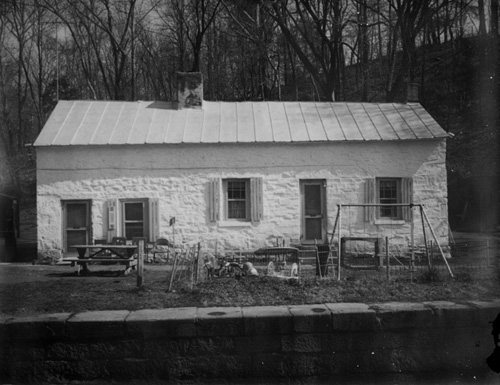History is all around us.
The mid-Atlantic is rich with reminders of America’s great heritage, from battlefields and monuments to buildings and structures that help to tell our young nation’s story.
These places are precious, whether they mark a great event, or merely show us a simpler way of life.
Sadly, historic places are vulnerable to the forces of time and development, and they are disappearing before our eyes. Man-made structures are especially challenging to preserve because many of them have already suffered from overuse and decay.
Terms of endearment
The C&O Canal Trust and the National Park Service are making every effort to preserve, rehabilitate, restore and in some cases reconstruct a wide variety of Canal-related structures along the 185-mile towpath. But the National Park Service doesn’t throw around these four terms lightly. Each represents a different approach to retaining a structure’s historic value as defined by the Secretary of the Interior’s Standards for the Treatment of Historic Properties.
- A preservation attempts to retain all historic materials and features, and great care is taken to do so through conservation, maintenance, and repair.
- A rehabilitation also attempts to retain historic materials and features, but these properties are often more deteriorated, so more latitude is provided for replacement.
- A restoration attempts to retain historic materials and features from a particular time period, but allows for the removal of materials from other time periods.
- A reconstruction re-creates a non-surviving site, landscape, building, structure or object in all new materials.
While the definitions seem clear cut, different structures along the Canal don’t always fit neatly into one category—especially as they relate to restorations vs. rehabilitation.
Swains Lockhouse
 Justin Ebersole, a National Park Service Archeological Technician, explains that Swains Lockhouse qualifies as a rehabilitation because it needs to be altered to meet its intended uses (Canal Quarters property) but will still retain its historic character.
Justin Ebersole, a National Park Service Archeological Technician, explains that Swains Lockhouse qualifies as a rehabilitation because it needs to be altered to meet its intended uses (Canal Quarters property) but will still retain its historic character.
In short, the property’s historic external character will be retained during our rehabilitation,” said Ebersole. “For the comfort of Canal Quarters guests, however, we will add amenities that are not from the era, while still maintaining much of its historic charm.”
According to Ebersole, good examples of restorations along the Canal include the Abner Cloud House (mile 3.2) where a two-story porch was removed to make it appear as it historically did; and the Engineer’s House at Great Falls (mile 14.4) where a wood frame addition was removed.
With careful assessment of existing structures along the Canal, we are better able to preserve their historical value and create safe, authentic Canal environments for generations of visitors to come.
Next Week
Next week, join us when we’ll reveal what era Canal Quarters guests will enter when they walk through the doors of Swains Lockhouse! See that post here!
Learn More
Be sure to visit our main Swains Lockhouse page to read all of our blog posts documenting the rehabilitation of this historic structure.
Make a Gift to Save Swains





